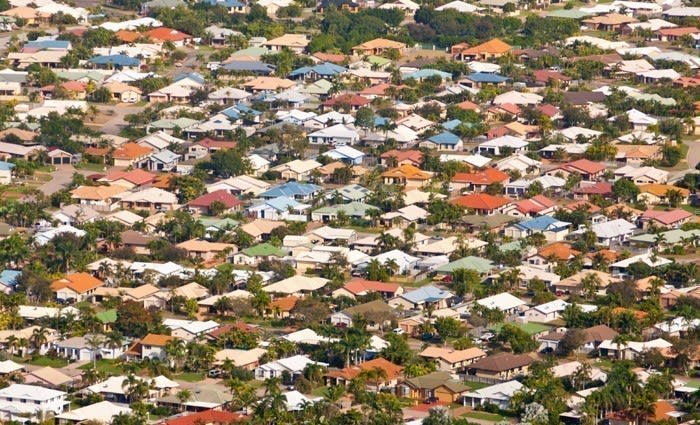Property 101: APRA's loan serviceability methodologies
In making serviceability assessments of borrowers, most ADIs currently use a methodology in which they calculate the borrower’s Net Income Surplus (NIS).
Computing NIS is a multi-faceted calculation, with a number of different inputs, and for which the relative importance of each input is not always clear.
Assessing the relative prudence of NIS assessments across ADIs can therefore be problematic, as it can be difficult to determine the extent to which one conservative assumption outweighs another less- conservative assumption, and apparent minor differences in methodology can sometimes have a significant impact on the overall outcome.
To assess and compare lending standards across ADIs, one technique used by APRA has been a Hypothetical Borrower Exercise (HBE).
In early 2015, APRA asked a number of the larger ADIs to provide their serviceability assessments for four hypothetical mortgage borrowers — two owner-occupiers and two investors — using their policies in place as at 31 December 2014. This allowed APRA to compare the lending decisions of ADIs based on identical borrower characteristics. Importantly, it also allowed APRA to disassemble assessments into their component parts. In May 2015, APRA outlined some results and conclusions from the first HBE.
To test how lending policies had changed in response to APRA’s scrutiny, APRA ran a second HBE in late 2015, based on the policies ADIs had in place as at 30 September 2015. By asking the same population of ADIs to assess the same four hypothetical borrowers, not only could APRA compare across ADIs, it could also compare the same ADI at two different points in time.
The four charts below relate to the four calculation components for one of the hypothetical borrowers — in this case, a ‘typical’ investor. The blue bars show the results for December 2014, while the red dots show the September 2015 results for the same lender. Each chart is sorted with the most conservative lender for that particular component (as at September 2015) on the left, and the least conservative on the right.
Chart A - Income recognised (less tax and haircuts)
Percentage of gross pre-tax income
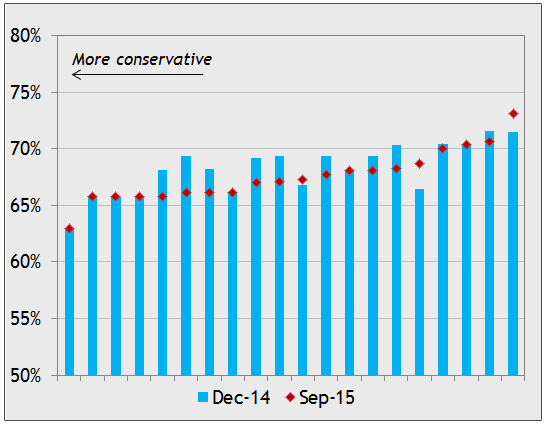
Chart B - Minimum living expense assumptions
Percentage of borrower pre-tax salary income
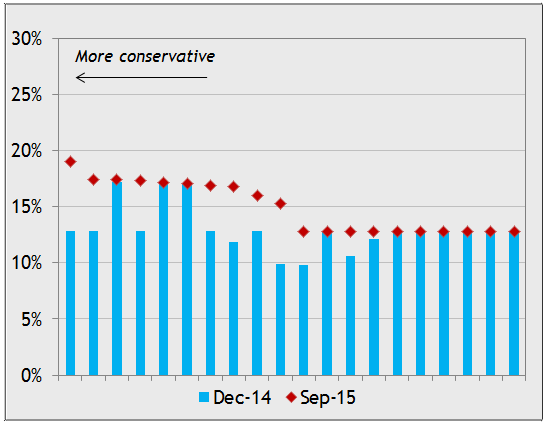
Chart C - New mortgage
Interest rate used in serviceability assessment
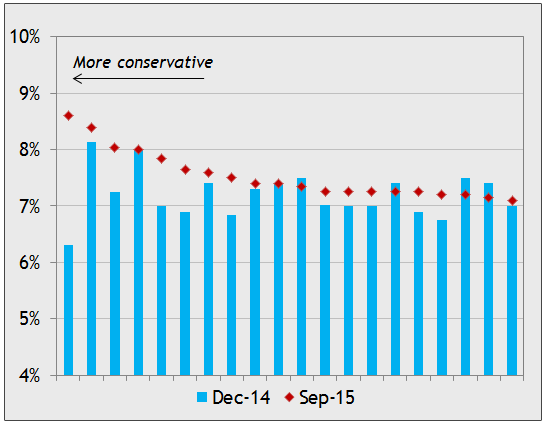
Chart D - Existing mortgage
Interest rate used in serviceability assessment
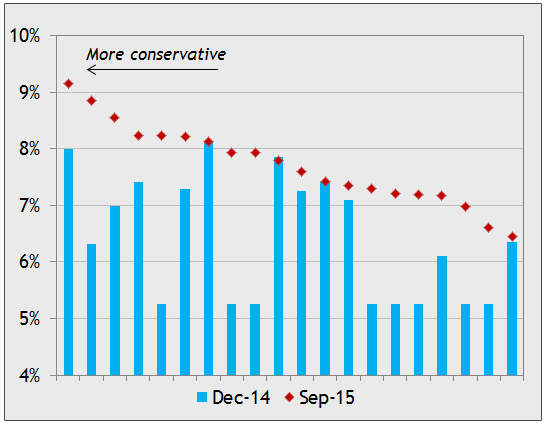
The current interest rate on the existing mortgage debt is 5.2%
Chart A shows income recognised, as a percentage of gross pre-tax income. While the assessment of PAYG salary income has usually remained the same between the two periods, a number of lenders have applied larger haircuts (i.e. discounts) to less stable sources of income such as overtime, bonuses, commissions, investment dividends and rental income.
Chart B shows minimum living expense assumptions as a percentage of pre-tax salary income. Some lenders have made quite large changes to this component of their NIS assessment. This impact has typically arisen from two main sources:
- considering borrower-declared expenses where these are greater than calculated benchmarks; and/or
- scaling living expense assumptions in line with income.
Chart C shows the interest rate used in the serviceability assessment for this new mortgage. Various lenders have increased that rate in response to APRA’s December 2014 letter, in which APRA stated that prudent serviceability policies should incorporate a ‘serviceability buffer of at least 2 percent above the loan product rate, with a minimum floor assessment rate of 7 percent.
Chart D shows the interest rate used in the serviceability assessment for an existing mortgage commitment. Here, the changes are even more dramatic than for Chart C, as at the time of the first HBE a number of ADIs were not using any serviceability buffer on existing debt.
These four components combine to calculate NIS. Whilst there was little overall change in NIS for the lenders that were already relatively conservative in December 2014, lenders that were the least conservative in December 2014 generally reported a significant drop in calculated NIS using their September 2015 policies. These changes had the effect of tightening the spread of calculated NIS from the most to the least conservative ADI. Overall, the maximum loan sizes reported by ADIs for the four hypothetical borrowers declined by, on average, around 12 per cent for investors and 6 per cent for owner-occupiers. (Note that this does not imply actual loan sizes are falling across the board; indeed the average size of loans continues to rise.)
Conclusion
APRA’s HBEs have proven a simple but effective tool for examining the impact of changes to residential mortgage lending policies during 2015.
Overall, debt serviceability assessments now appear to be both more prudent and more consistent across ADIs, relative to December 2014. APRA will continue to engage ADIs on this issue in 2016 to assess whether the observed improvements in sound underwriting practices are maintained. APRA will also be examining the extent to which loans are able to be approved outside an ADI’s own (tightened) policy parameters.
